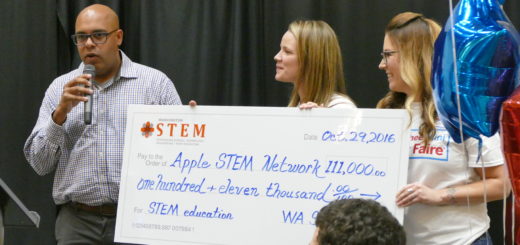Our Valley Our Future’s grass-roots approach is transforming the greater Wenatchee Valley
It is stunning to contemplate the transformative impact that the grass-roots-driven organization Our Valley Our Future has made in the greater Wenatchee Valley during its brief 10-year life. The tiny organization and its board have done a masterful job of engaging ordinary citizens from all walks of life to develop action plans that have profoundly influenced the valley’s quality of life and economy and social fabric.
OVOF works quietly behind the scenes and encourages community members, businesses, governments and nonprofits to think regionally, collaboratively and with a long-term perspective. Its impact — including by convening and facilitating community gatherings — often falls under the media spotlight.
OVOF Coordinator Steve Maher recently met with the Confluence Rotary Club to talk about the history and impact of the organization. The work of OVOF is based upon a collective impact model — that people from different communities, groups and interests coming together around a common vision to solve specific challenges is the most constructive way forward, Maher told them.
Typically, community planning is done by civic and political leaders without involving ordinary citizens. OVOF, by contrast, gathers input from diverse groups in the community in determining our shared values, community challenges and potential solutions.
This approach is having a significant impact, For example, the first OVOF plan (2017-21) spurred the development of a local advocacy nonprofit — TREAD — that has been instrumental in developing a plan to build and maintain local trails. The plan also led to the convening of a regional housing solutions group to consider options to address the housing crisis that impacts communities, businesses and families. Furthermore, a Latino outreach effort was created, which helped local health authorities connect with that part of the community during the Covid pandemic. By the time the first Action Plan was “retired” in December 2021, two-thirds of the more than 150 initiatives, projects and programs, spread across six focus areas, had met their primary objectives.
The second Action Plan (2022-26), which came after a second community outreach campaign that saw more than 2,500 residents provide input, includes nine so-called game-changer initiatives as well as dozens of other community improvement projects.
The game changers include such projects as developing: a technology ecosystem; regional wildfire prevention, preparedness and recovery; diverse community leadership; a regional approach to housing, and taking steps to respond to a post-carbon economy. Game changers are complex opportunities that involve multiple organizations. Behind the scenes, significant progress has been made on all of the current plan’s game changers, Maher said. The Action Plan can be accessed at ourvalleyourfuture.org/.
For example, in the “Technology Ecosystem” game changer, the NCW Digital Access and Equity Coalition has been established to push for more high-speed internet and access to digital skills to address the reality that a significant percentage of households in the region don’t have access to the internet, a desktop or laptop computer.
Another example is that the Community Foundation of NCW has taken the lead in the “Diverse Leadership” game changer by providing funding and staffing for a community-based leadership program that launches this year.
The major projects identified in the OVOF plans have brought more than $100 million in grants to game changer lead partner organizations, according to Maher. That’s stunning.
OVOF’s impact is being noticed. Whether a project is in the OVOF plan is a question often asked by Rep. Kim Schrier and Senators Maria Cantwell and Patty Murray when considering supporting federal funding for local projects, Maher said. In addition, local jurisdictions are increasingly incorporating OVOF’s plan or parts of it into their own comprehensive plans.
Other communities are taking notice of the strategic advantages of grass-roots-based community engagement. Bend, Oregon, recently completed a similar strategic plan with Maher assisting in the process.
For many people in the community, the contributions of Our Valley Our Future are hard to see on a day-to-day basis. But the power of the nonprofit’s approach cannot be overestimated. How fortunate we are to have OVOF helping move our communities forward with community voices at the center of the work.
Thanks to Our Valley Our Future, the valley is moving away from parochial, isolationist thinking in favor of thinking regionally, fostering collaboration, making sure more voices are heard in the community and thinking about long-term challenges.




